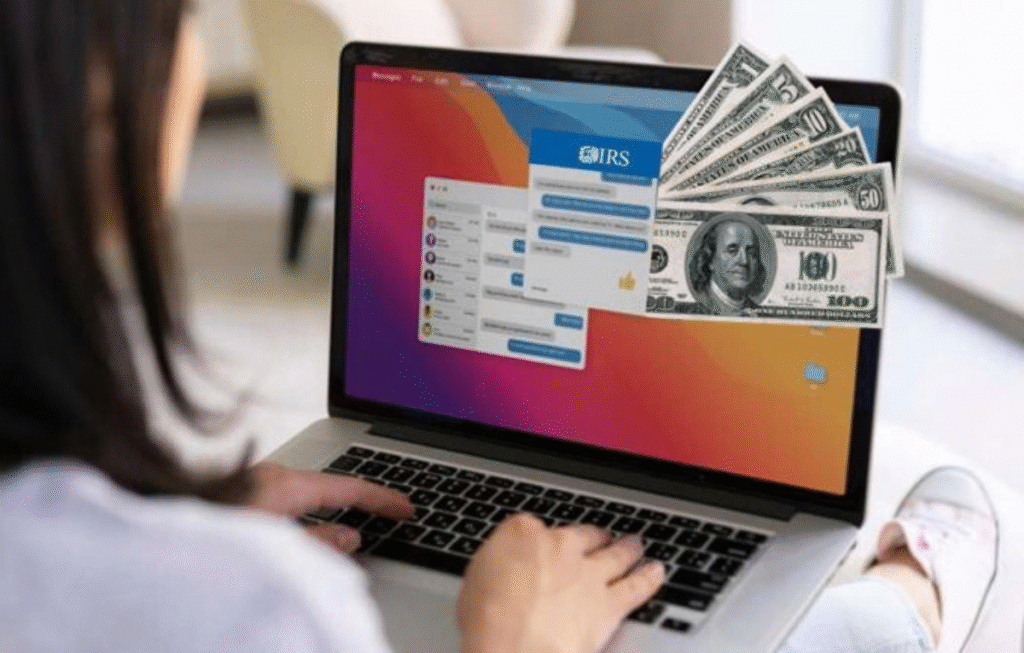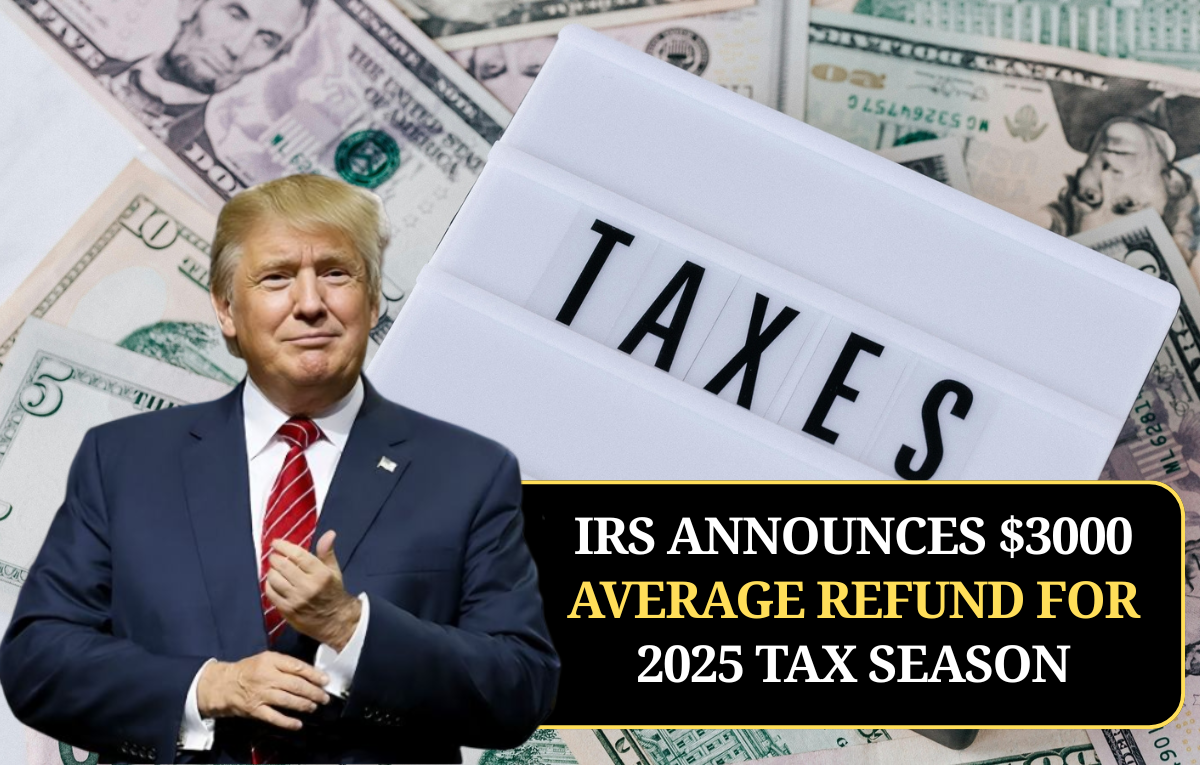Tax season always brings questions: “How much will I get back?” “When will I see my refund?” For the 2025 tax season, early IRS data suggests that the average refund is hovering around $3,000 (or higher, depending on when in the filing season), giving many taxpayers reason for cautious optimism.
In this article, we’ll break down what that number means, who qualifies, when refunds are expected, what factors can speed or delay your check, and how to track your refund.
What the Data Shows: The Average Refund
Let’s begin by examining what the numbers say so far.
- According to IRS filing season statistics for mid-March 2025, the average refund amount was about $3,271.
- By early April, with more returns processed, the average refund was approximately $3,116.
- An earlier IRS report from the week ending February 28, 2025, indicated the average refund had reached $3,382 (for returns processed to that point) for direct deposit refunds.
- However, broader public reporting (e.g. Bankrate) notes that as of early filing in 2025, the average tax refund observed was around $2,939.
- Some media outlets cite the average refund rising from $3,213 (2024) to $3,453 in 2025 based on partial IRS data.
These fluctuations reflect the fact that “average refund” is a moving number, especially early in the filing period when large refunds (or returns claiming big credits) may influence the average.
Bottom line: The “$3,000 average refund” is not a fixed guarantee, but a reasonable midpoint based on trends so far. Many taxpayers will receive more or less, depending on individual circumstances.
Eligibility & Who Gets a Refund

A tax refund isn’t automatic for everyone—it’s based on how much you paid in taxes, tax credits you qualify for, and whether your withholding exceeded your tax liability. Here’s how eligibility works:
1. You must have filed a tax return (Form 1040 or equivalent)
To receive a refund, you must file your 2024 tax return (filed in 2025). If you have no filing requirement but qualify for refundable credits, filing is still essential.
2. You must have overpaid (withholding or estimated payments)
Refunds arise when your total tax payments (via withholding, estimated tax, or credits) exceed your tax liability. The excess is returned to you.
3. Refundable credits can boost your refund
Credits like the Earned Income Tax Credit (EITC) or Additional Child Tax Credit (ACTC) can generate larger refunds, especially for lower- and moderate-income households.
For EITC/ACTC claims, the IRS is required by law (PATH Act) to delay issuing those specific refunds until mid-February at the earliest.
4. No disqualifying factors or offsets
If you owe certain debts (e.g. student loans, back taxes, child support), the IRS may offset (withhold) part or all of your refund. Also, errors or unverified information on your return can delay or reduce refunds.
5. Time window to claim a refund
You generally have 3 years from the original filing deadline (or 2 years from the date you paid the tax) to claim a refund. After that, you may lose the opportunity.
When to Expect Your Refund
Understanding the timeline helps taxpayers know when to expect their return in hand (or bank).
IRS Processing Times
- Electronic filing (e-file) + direct deposit: Refunds are typically issued in 21 calendar days or less for most returns, if there are no errors or additional reviews.
- Electronic filing with a mailed check: May take longer—typically an additional week or more.
- Paper returns (mailed): Usually take 6 weeks or more, especially if the return must be scanned, sorted, or goes through manual processing.
The IRS itself states that electronically filed “Form 1040 series” returns are generally processed within 21 days.
Special Considerations: EITC / ACTC Claims
If your return includes the EITC or ACTC, you may face delays. The IRS cannot issue those refunds before mid-February, even if you file early.
Delays & Exceptions
Refund timing may be extended if:
- There are errors, inconsistencies, or missing information
- Your return is flagged for review or audit
- Processing backlogs or staffing issues occur at the IRS
- You used a foreign address or changed banking info
- Offsets or debts reduce your refund
Additionally, IRS has acknowledged delays in processing some electronic payments in 2025.
Example Timeline
Suppose you e-file and choose direct deposit:
- The IRS receives and accepts your return
- Within about 21 days, you receive your direct deposit (if no issues)
- If any review or verification is needed, the timeline may stretch
- If you file after peak volume season (e.g., later in April), it can take longer
As a reference, many tax guides predict that refunds for 2025 will begin flowing in late January to early February (depending on when IRS begins accepting returns).
Why $3,000? What Affects That Average

That average refund number is shaped by many factors:
- With holding behavior: Many taxpayers over-withhold to avoid owing; this increases refunds.
- Tax credits and deductions: The use of credits (EITC, child tax, education) can inflate refunds for qualifying taxpayers.
- Filing patterns & timing: Those who file early and claim big credits may skew the average upward early in the season.
- Offset & debt withholding: Some refunds are reduced due to offsets (e.g. unpaid obligations).
- Statistical weighting: As more returns are processed, refunds for smaller returns (or fewer credits) will balance the average.
- Economic shifts & policy tweaks: Adjustments in tax law, deductions, or credits may influence behavior and results.
Because of these variables, averages can shift throughout the season.
How to Maximize Your Refund (or Avoid Delays)
Here are practical tips:
- E-file your return — electronic filing is faster, more accurate, and helps reduce errors.
- Opt for direct deposit — avoids delays associated with mailed checks.
- Claim all credits you qualify for — such as EITC, child tax credits, education credits—these can meaningfully boost refunds.
- Double-check your data — errors in Social Security number, income, dependents, or banking info are common sources of delays.
- File early — filing well before the deadline may reduce chances of backlog delays (though for EITC/ACTC refunds, early filing doesn’t always speed them up).
- Avoid common pitfalls — mismatched names, prior-year adjustments, identity verification, missing forms.
- Track your refund — use the IRS “Where’s My Refund?” tool or IRS2Go app.
- Be aware of IRS staffing or shutdown risks — in 2025, for instance, IRS furloughs due to government funding gaps may affect processing.
What Should Taxpayers Expect (and Not Expect)
- Don’t expect exactly $3,000 many will get more, many less.
- Don’t rely on refunds arriving within a fixed number of days if your return is complex or includes credits.
- Be prepared for delays, especially if your return triggers review or verification.
- IRS statements caution that while many refunds are issued in fewer than 21 days, they do not guarantee timing.
- For returns claiming EITC/ACTC, refund may not arrive until March 3 (assuming no issues).
How to Track & Monitor Your Refund

- Use Where’s My Refund? on the IRS website: updates available about 24 hours after e-filing current year returns.
- Use the IRS2Go mobile app for the same functionality.
- Pay attention to notices or letters from the IRS sometimes they request additional documentation or verification.
- Check your IRS transcript online if you suspect adjustments or offsets.
Final Thoughts & Outlook
The $3,000 average refund claim is well within the realm of possibility, based on mid-season IRS data. But it is not a guarantee the actual amount you receive depends on your withholdings, credits, deductions, and whether your return is flagged for additional review.
Filing accurately, opting for e-filing with direct deposit, ensuring your information is current, and claiming all credits you qualify for are your best strategies for achieving a solid refund and avoiding unnecessary delays.
FAQs:-
What did the IRS confirm about 2025 tax refunds?
The IRS announced that the average refund for 2025 will be around $3,000, based on early filing and return data.
When will the IRS start issuing 2025 tax refunds?
Refunds are expected to begin rolling out in late January 2025, shortly after the IRS opens the tax filing season.
What are the key refundable tax credits for 2025?
Major refundable credits include the Earned Income Tax Credit (EITC), Child Tax Credit (CTC), and Education Credits.
